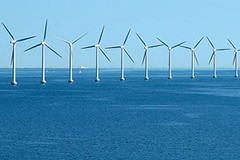As reported in RMI Outlet, the Rocky Mountain Institute's blog, reductions in storage battery prices are opening new opportunities for transforming energy use patterns. The Tesla Powerball battery, expected to reach the market in 2016, has caused analysts to rethink projections of home lithium-ion battery costs and potentially shake up utility industry practices in a number of geographies. The cost reduction is fairly dramatic, as highlighted by this excerpt from the article:
In our modeling for both The Economics of Load Defection from April 2015and its predecessor, The Economics of Grid Defection from February 2014, our average battery price in 2015 was $547/kWh. Our models did not assume a price close to $350/kWh until 2022 (the $429/kWh price arrived in our models in 2018). This means Tesla’s batteries are seven years ahead of the prices we modeled. (The $250/kWh utility price point didn’t appear in our models until 2028, though we didn’t specifically model a utility-sized solution.) A seven-year accelerated price reduction means tens of millions of more customers will be able to cost-effectively install solar-plus-battery systems than we originally modeled in our analyses.Some utility companies are already signing up to offer the Powerwall to customers with a variety of incentives, including Green Mountain Power in Vermont.


















